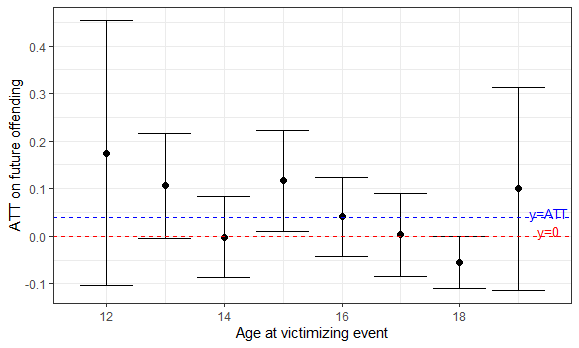Effects of Adolescent Victimization on Offending: Flexible Methods for Missing Data & Unmeasured Confounding
Mateo Dulce Rubio, Edward H. Kennedy, Valerio Baćak, Daniel S. Nagin

Abstract
The causal link between victimization and violence later in life is largely accepted but has been understudied for victimized adolescents. In this work we use the Add Health dataset, the largest nationally representative longitudinal survey of adolescents, to estimate the relationship between victimization and future offending in this population. To accomplish this, we derive a new doubly robust estimator for the average treatment effect on the treated (ATT) when the treatment and outcome are not always observed. We then find that the offending rate among victimized individuals would have been 3.86 percentage points lower if none of them had been victimized (95% CI: [0.28, 7.45]). This contributes positive evidence of a causal effect of victimization on future offending among adolescents. We further present statistical evidence of heterogeneous effects by age, under which the ATT decreases according to the age at which victimization is experienced. We then devise a novel risk-ratio-based sensitivity analysis and conclude that our results are robust to modest unmeasured confounding. Finally, we show that the found effect is mainly driven by non-violent offending.
Reference
Effects of Adolescent Victimization on Offending: Flexible Methods for Missing Data & Unmeasured Confounding
Mateo Dulce Rubio,
Edward H. Kennedy,
Valerio Baćak,
Daniel S. Nagin
The Annals of Applied Statistics (The Annals of Applied Statistics,). 2025.
PDF
Presentación en español